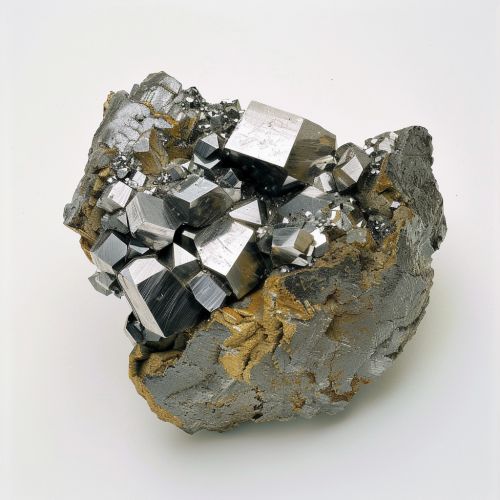Tellurium
Introduction
Tellurium is a chemical element with the symbol Te and atomic number 52. It is a brittle, mildly toxic, rare, silver-white metalloid. Tellurium is chemically related to selenium and sulfur, all three of which are chalcogens. It is occasionally found in native form as elemental crystals.


History
Tellurium (from the Latin tellus, meaning "earth") was discovered in the 18th century in a gold ore from the mines in Zlatna, near today's city of Alba Iulia, Romania. This ore was known as "Faczebajer weißes blättriges Golderz" (white leafy gold ore from Faczebaj), and it was used as a gold ore in the Habsburg empire. The element was identified by the Hungarian scientist Franz-Joseph Müller von Reichenstein in 1782.
Characteristics
Tellurium is a metalloid, similar to silicon and germanium. It is a semiconductor and shows greater conductivity in certain directions, which depends on atomic alignment. The conductivity increases slightly when exposed to light (photoconductivity). When in its crystalline form, it is silvery-white and when it is pure, it has a metallic luster. It is usually available as a dark grey powder, and its properties are intermediate between those of metals and nonmetals.
Applications
Tellurium has several uses. It is used in the production of thermoelectric devices and in solar panels. It is also used in the manufacture of rewritable optical discs, in the form of an alloy with silver and antimony. In metallurgy, it is used to improve the machinability of certain types of steel, and it is an important component of blasting caps. Tellurium is also used in the ceramics industry to give a blue color to glazes.
Occurrence and Production
Tellurium is a rare element, even rarer than platinum, gold, or mercury. It is found in its native form and as a telluride in ores of gold, silver, and nickel. It is also found in the mineral calaverite. The production of tellurium involves the anode sludges from the electrolytic refining of blister copper. It is also recovered as a byproduct of the refining of lead and gold.
Health and Safety
Tellurium is considered to be mildly toxic. It can cause drowsiness, nausea, and in extreme cases, death. However, the main concern is the unpleasant garlic-like odor that is caused by the body metabolizing tellurium, which can last for weeks.
